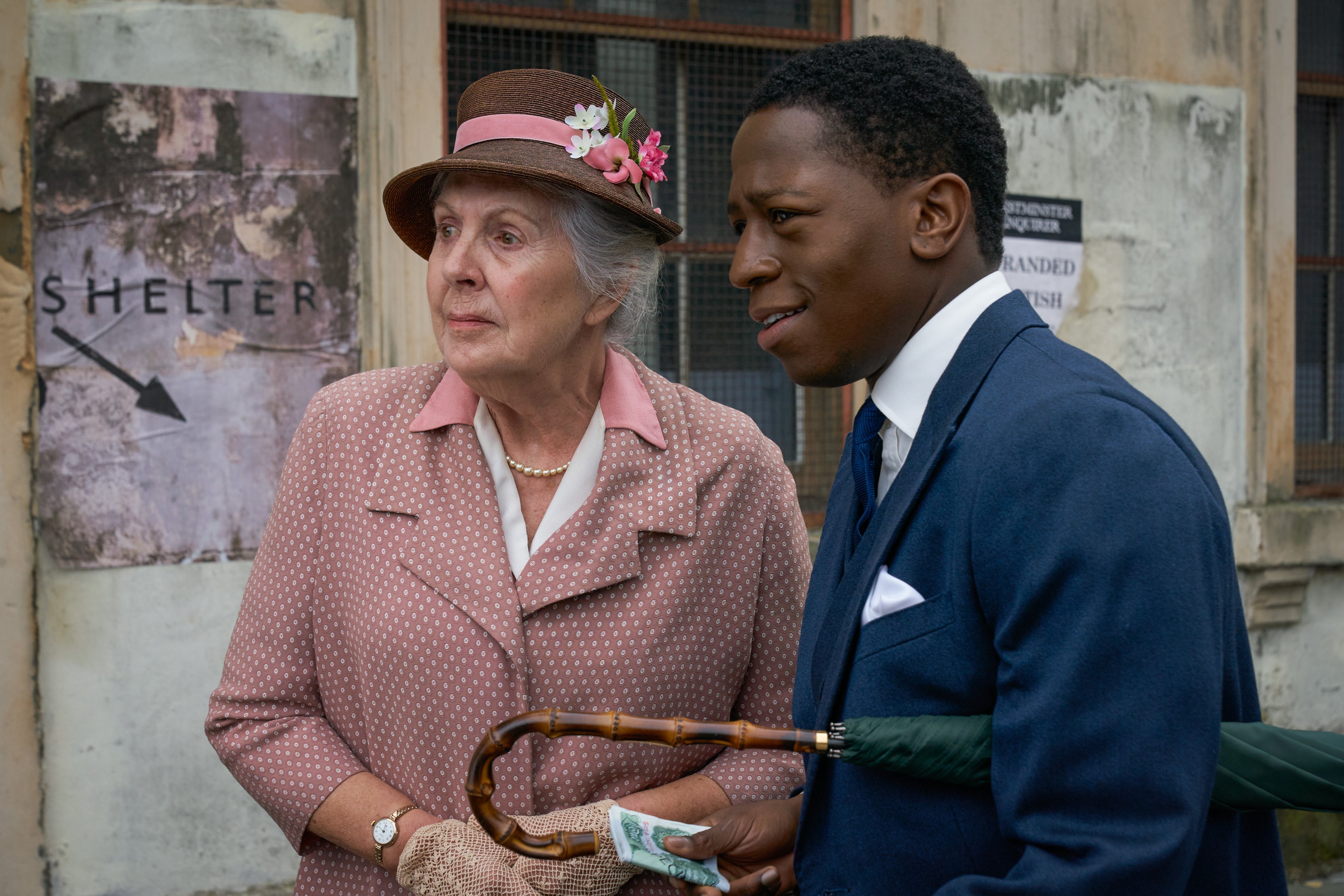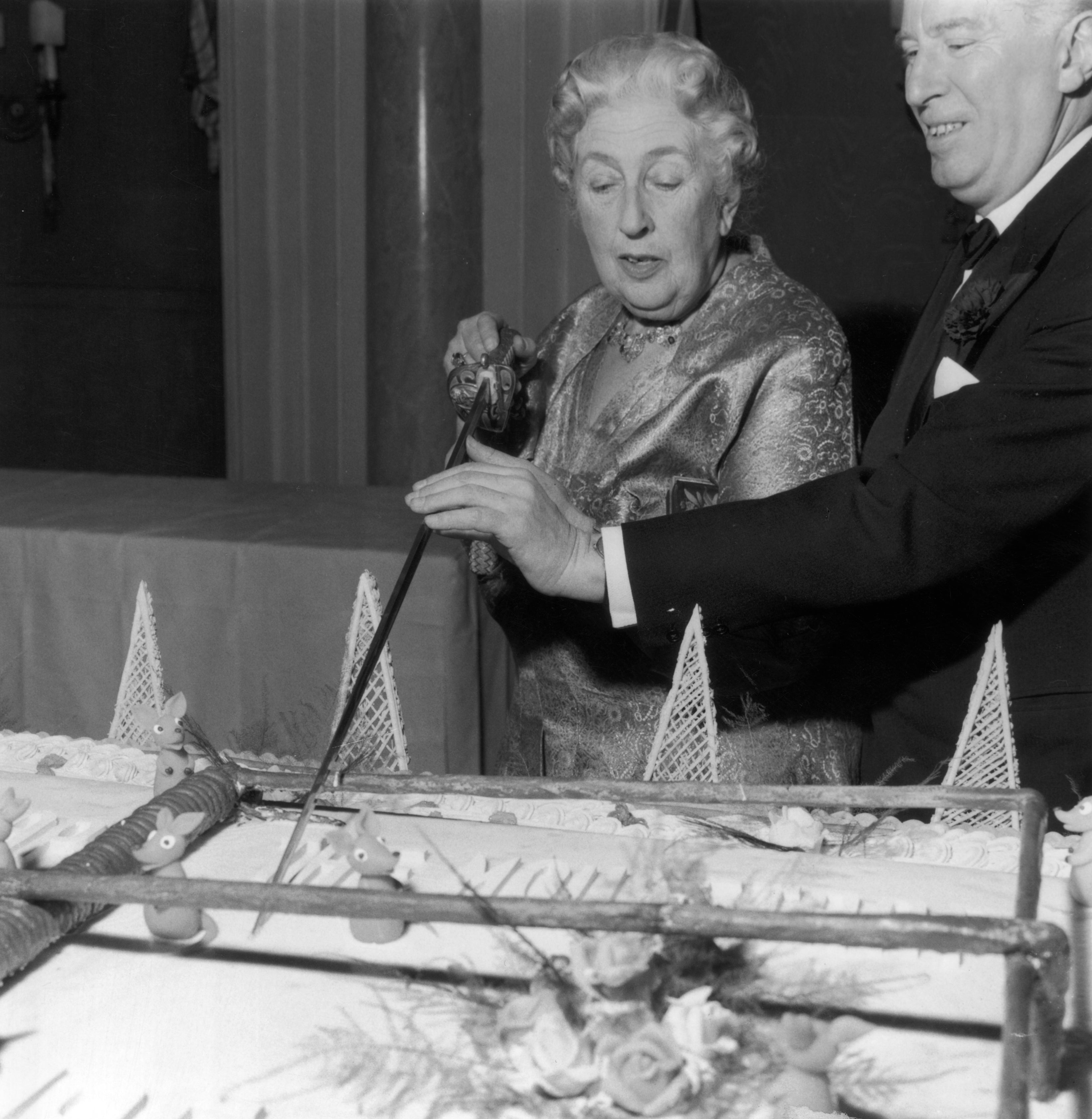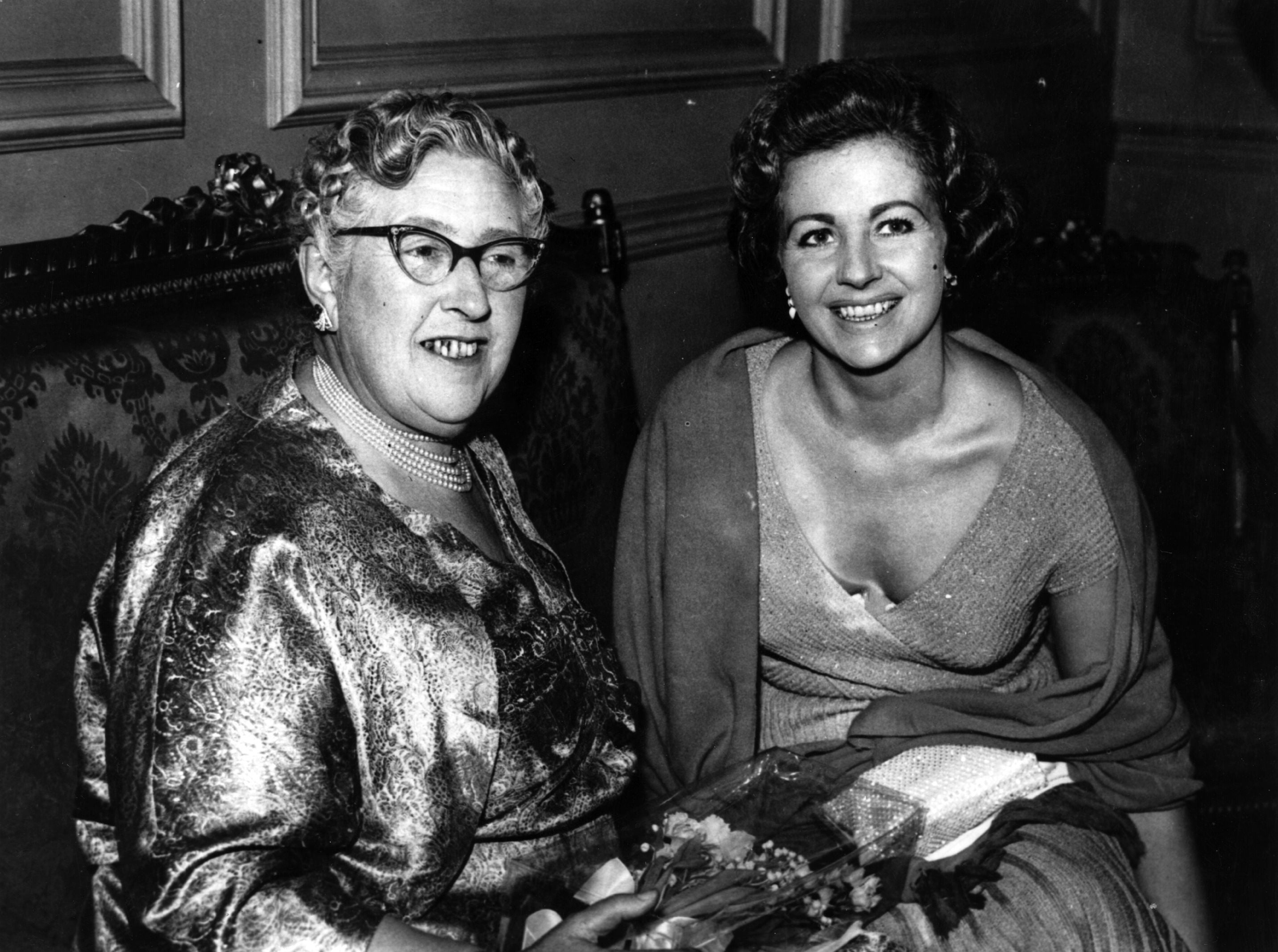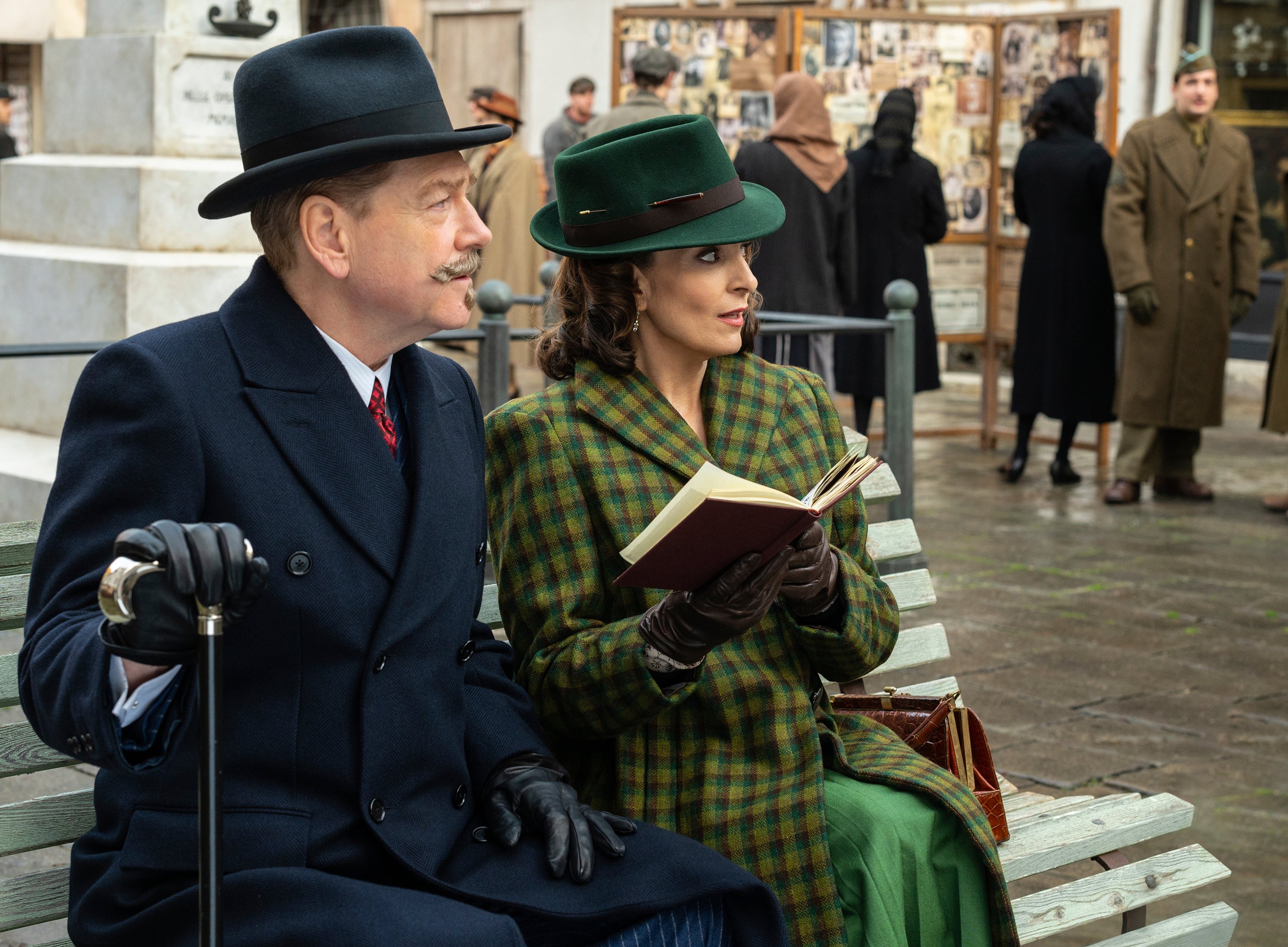The Independent's journalism is supported by our readers. When you purchase through links on our site, we may earn commission.
Filthy rich and highly subversive – Agatha Christie was anything but a harmless old lady in a tweed suit
It wouldn’t be Christmas without an Agatha Christie – and some cosy serial killing. But, as Christie’s biographer and historian Lucy Worsley reveals, there was a dark side to the author’s murderous imaginings, and the clues are all there in her family life

Do you feel that Christmas wouldn’t be Christmas without a bit of televisual homicide? Maybe a murder on the Orient Express, or a death on the Nile? Whether you prefer Kenneth Branagh, Peter Ustinov or the great Albert Finney in the role, Agatha Christie’s Hercule Poirot seems as much a part of the festive season as the tree.
But, if you think about it, consuming crime during what’s supposed to be cosy family time at home is really a bit strange. Especially the dark horrors conjured up by Christie, the brilliant innovator, who wrote a landmark serial killer novel as early as the 1930s, and who could imagine a world where both victims and murderers could be children.
Agatha Christie’s publishers marketed her in her later life as a harmless-looking old lady in a tweed suit, the living embodiment of Miss Marple. But appearances are deceptive. Christie, as a woman, was filthy rich and highly subversive. And hardworking. During her long life, from 1890 to 1976, she wrote 80 books.
But being part of the Christmas tradition wasn’t something she ever planned; it was more the result of a canny publishing plan created for her. After the Second World War, she fell into the pattern of producing one book a year, which was always brought out in time for the gift market. In 1961, her publisher, William Collins, claimed that his marketing slogan, “A Christie for Christmas”, was “good for an extra 26,000 copies”. In the same year, Unesco officially named her the world’s best-selling author. However, this isn’t the full story of why she holds such appeal for this time of year.
From 1960 onwards, she also allowed MGM Studios to start making films of her books, with Margaret Rutherford as Miss Marple. These films haven’t survived particularly well, but the 1970s versions of Death on the Nile and Murder on the Orient Express remain Christmas classics for armchair travellers.

The very best of Christie’s stories, though, are set in Britain. And as a notorious control freak, she didn’t really like people making films of her books, as she was often disappointed by the results. “Frankly, it’s pretty poor,” she said of one effort by MGM. “One does things for money and one is wrong to do so.” In one film, Miss Marple, without Christie’s blessing, implausibly reveals herself to be skilled at fencing, while in another, Poirot inexcusably becomes French rather than Belgian. One thing is certain: Christie would have been amazed to find herself topping the Christmas TV billing in 2023. “Once I’ve been dead 10 years,” she used to say, “I’m sure nobody will ever have heard of me.”
Ultimately, her novels were so successful because they were immensely readable, and because of the cleverness of the plotting. On top of that, though, Christie also had her finger firmly on society’s pulse. This means that to us, today, her works aren’t just entertainment, they’re also a historical record of the changing interests and lifestyles of an increasingly powerful group: the middle classes in 20th-century Britain and America.
But the deeper history of where Christie fits into crime writing begins way back at the time of the industrial revolution. Because Britain industrialised early, it also had an early tradition of detective fiction upon which she could build. In the 18th century, most Britons would have lived in villages and their greatest fears would have been dying of famine, or disease, or maybe in a war. By the 19th century, though, when detective stories emerged, more people had moved to cities. Although this might seem to go against our modern instincts, an urban life felt safer than a rural one: there were things like plumbing, and a police force, to keep you safe. And it was only when removed from imminent danger to life that people began to feel the thrill of reading about death for entertainment.
Christie was very much a creature of the 20th century herself. Her wealthy parents had brought her up for marriage and homemaking. All of this changed when she was 23 and the First World War broke out. With her husband serving in France, Christie was among the many women who delayed motherhood and entered the workplace instead. In her case, she became a nurse, and passed the time waiting for her husband to return by drafting her first detective story.
When The Mysterious Affair at Styles was published in 1920, Christie had assumed she’d have to use a male pseudonym. But her publisher saw that the market was changing and thought otherwise. Many other women besides Christie had also broken out of the domestic sphere during the war. Since 1918, some of them had even been given the vote. Christie’s publisher could see a new desire for books with lots of female characters, placed in a domestic setting, and with a woman’s name on the cover.

Readers were ready for a detective – Hercule Poirot – who was underestimated, just as so many women were. On the negative side, he was vain, spent a lot of time on his appearance, and couldn’t walk in his uncomfortable shoes. But as a Belgian refugee, and not having been to public school, he was difficult to place, and criminals didn’t take him seriously – which was the secret to his success.
Another, more personal insight into Christie’s dark imaginings comes from her own family life. After having lost her father to illness at the age of 11, she had a recurrent nightmare. In this dream, she’d be playing with her mother, but then “Mummy” would suddenly morph into a stranger: a menacing male figure with pale blue eyes and a missing hand. Christie called this dream figure the Gun Man, and he represented danger and death.
At a young age, then, she became obsessed with the idea that even the person closest to you could inexplicably morph into a murderer. This, I think, is essential to understanding why she appeals so strongly at Christmas. In Arthur Conan Doyle’s Sherlock Holmes stories, which Christie read closely, the murderer is often a stranger, someone outside the social circle of the victim. But in Christie’s own work, the criminal is usually within the charmed circle of the family, or friends, or guests. In her fictional world, it’s distinctly possible that the person sitting right next to you on the sofa could be a killer.

The 1938 book Hercule Poirot’s Christmas is a classic, and features one of Christie’s favourite situations: the complicated household of a cruel millionaire, who enjoys toying with the feelings of his dependants and gives many of them motives to wish him dead. Secrets spill out: illegitimate children, stolen diamonds, a woman dispossessed of a fortune.
And it all happens under one roof. Throughout her canon, Christie’s murder weapons are often from the domestic sphere, with critic Alison Light noticing that her killers’ arsenal contains many things found around the house: arsenic used in pet medicine, cyanide for getting rid of wasps, a toxic paint for a hat. Other domestic items Christie’s characters use to kill include a kitchen pestle, a meat skewer, a golf club, a paperweight, a tennis racquet, and the steel ball from a bedstead.
The way Christie strikes so near to what we hold dear explains her dark appeal. So, if you’re thinking of enjoying a Christie while at home this Christmas, here’s a radical suggestion. Give your eyes a break from the screen, and go back to one of her books instead.
A great place to start is a novel that’s often voted the most brilliant detective story ever written, and it’s pretty much impossible to film because of an enormous twist that I’m certainly not going to reveal here. If you’ve not yet read The Murder of Roger Ackroyd, I promise it will make Christmas 2023 unforgettable.
Subscribe to Independent Premium to bookmark this article
Want to bookmark your favourite articles and stories to read or reference later? Start your Independent Premium subscription today.
Join our commenting forum
Join thought-provoking conversations, follow other Independent readers and see their replies
Comments